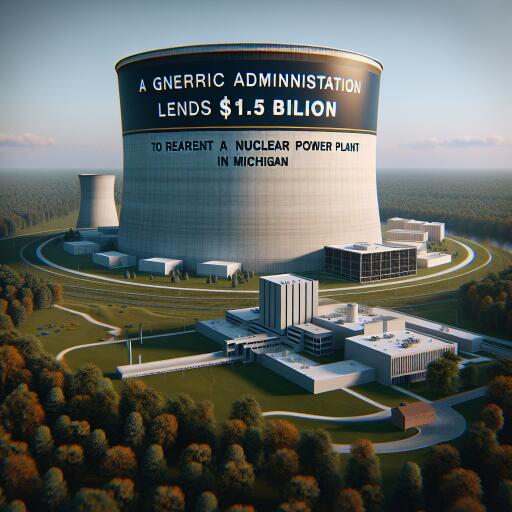
Biden Administration Will Lend $1.5 Billion to Restart Michigan Nuclear Power Plant, a First in the US
In an unprecedented move within the United States, the federal government has committed to a substantial financial investment towards rejuvenating a dormant nuclear facility in Michigan. The plant, known as Palisades, is situated in the southwestern part of the state, encapsulating high ambitions and groundbreaking efforts aimed at revitalizing nuclear energy’s role in the national grid.
Acquired by Holtec International in 2022, the Palisades plant, originally slated for dismantlement, is now on track for a revival. This initiative, which has garnered support from both the Michigan state government and the Biden administration, aims to have the 800-megawatt facility operational by the latter part of 2025. However, several significant steps, including rigorous inspections, comprehensive testing, and ultimately, the approval of the U.S. Nuclear Regulatory Commission (NRC), remain ahead.
Michigan’s Governor, Gretchen Whitmer, underscored the historic nature of this endeavor, highlighting it as the nation’s first instance of bringing a nuclear power plant back to life. This sentiment is echoed by Energy Secretary Jennifer Granholm, who emphasized the pivotal role of nuclear power in the U.S. Not only is it the largest source of carbon-free electricity, but it also underpins a vast array of jobs, supporting a wide-ranging ecosystem of employment across the country.
The Palisades facility, nestled along the shores of Lake Michigan and within a reasonable distance from Chicago, has seen various owners since its inception in 1971. Initially managed by CMS Energy, it was later transferred to Entergy, a Louisiana-based utility, in 2007, before its closure in 2022.
Despite the plant’s shutdown, Holtec has not been deterred, securing long-term power purchase agreements from two electric cooperatives. The company’s leadership has hailed the project as a significant step towards delivering reliable, uninterrupted power supply to countless households, businesses, and manufacturing units.
However, this ambitious project has not been without its detractors. A coalition has notably emerged in opposition, criticizing the decision to restart what they have labelled a “zombie reactor” and calling for a thorough review by the NRC.
In response to these challenges, Holtec spokesman Patrick O’Brien highlighted the financial aspects of the government loan, noting the imperative of repayment and the careful considerations involved in finalizing the deal.
The spotlight on nuclear energy has intensified globally, as evidenced by a recent commitment by thirty-four countries, including the U.S., to leverage nuclear power as a strategic pivot away from fossil fuels. This global shift is mirrored by domestic developments, such as the decision to extend the operational lifespan of California’s Diablo Canyon plant to prevent potential blackouts amidst the state’s transition to renewable energy sources—a project also bolstered by federal support.
Enthusiasm for nuclear power appears to be on the rise, not just within industry circles but also among legislative bodies and international partners. However, the path to restarting a nuclear plant is strewn with considerable challenges. Najmedin Meshkati, an engineering professor with extensive experience inspecting nuclear facilities worldwide, stresses the importance of a meticulous approach to ensure the safety and reliability of the Palisades plant. According to Meshkati, the combined efforts of the NRC and Holtec are crucial in meeting these stringent standards, setting a precedent for the secure and effective revitalization of nuclear power infrastructure.





Leave a Reply